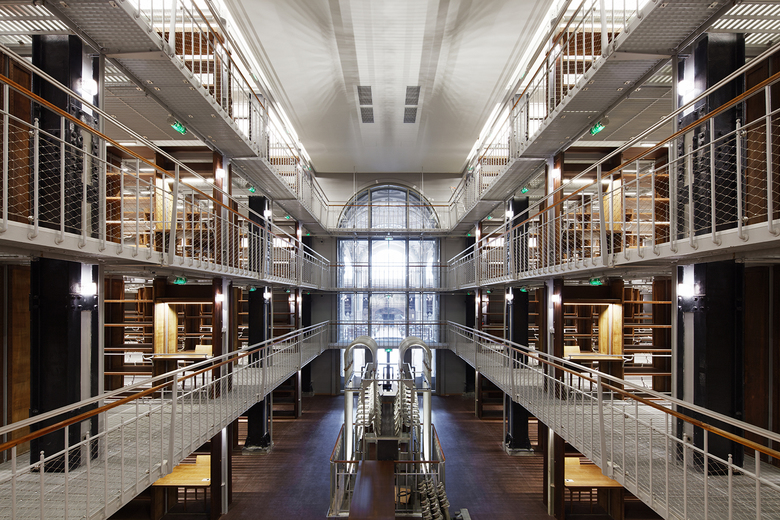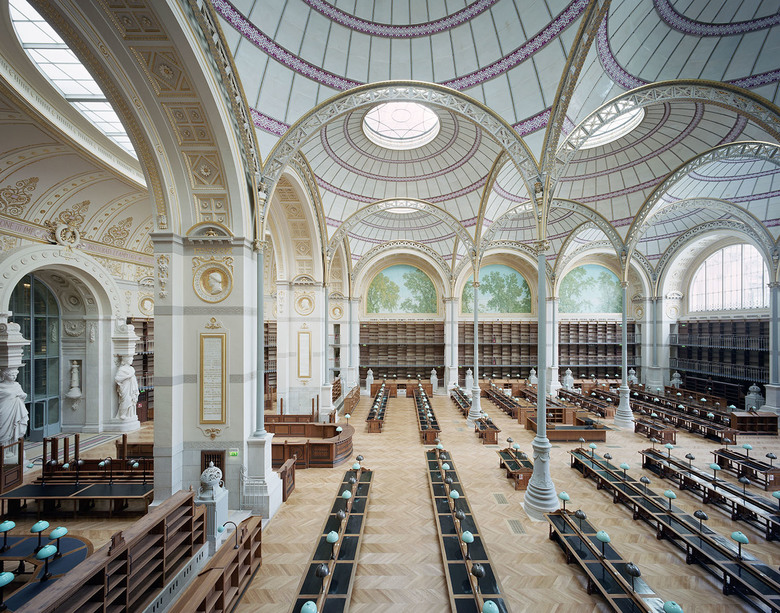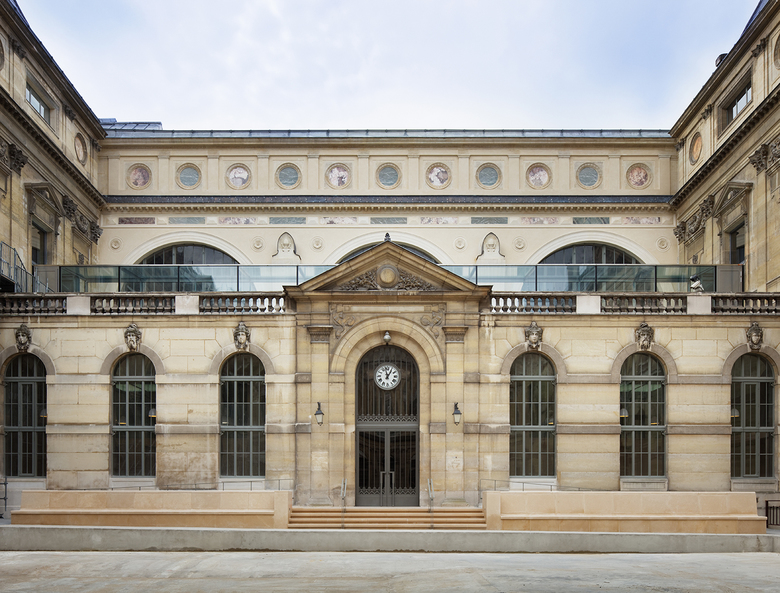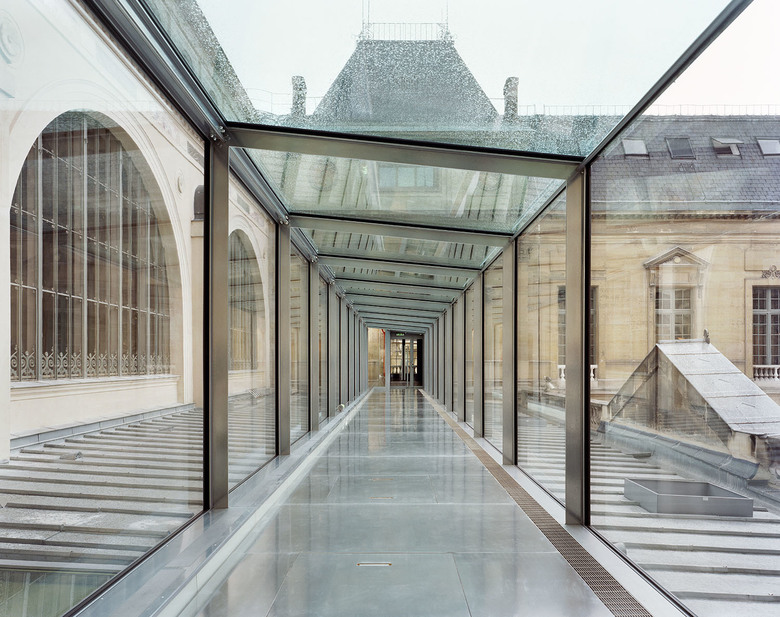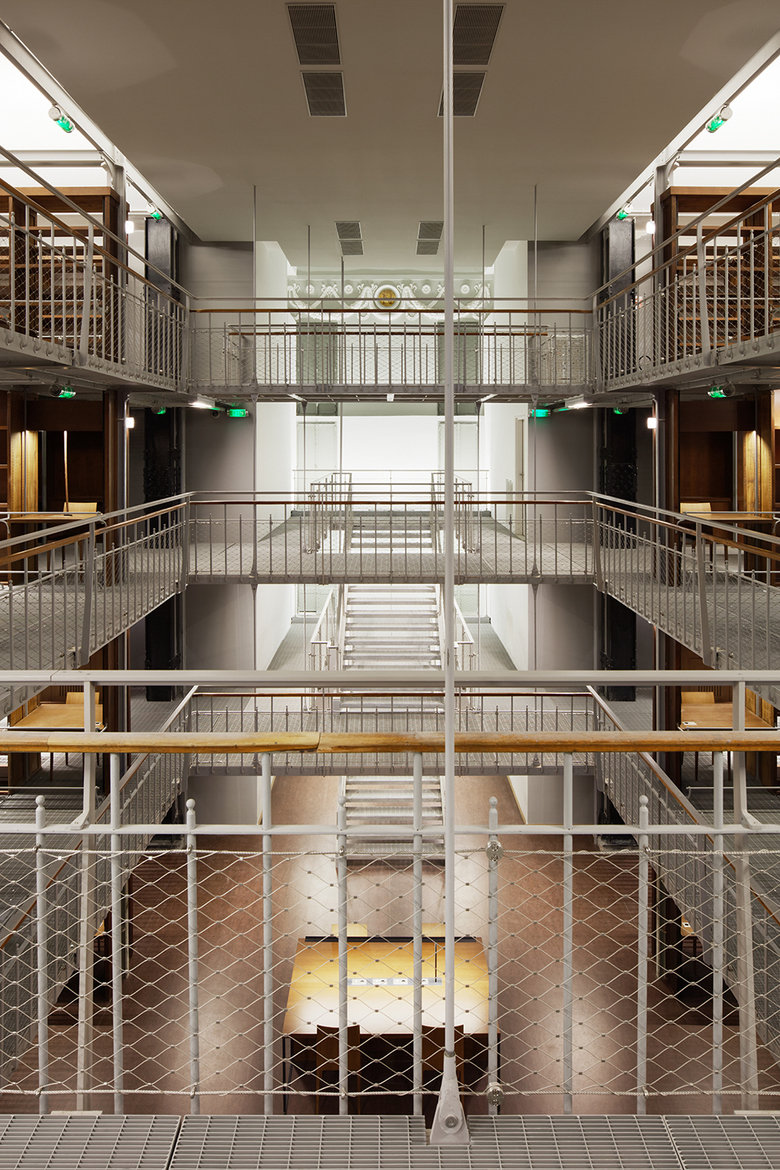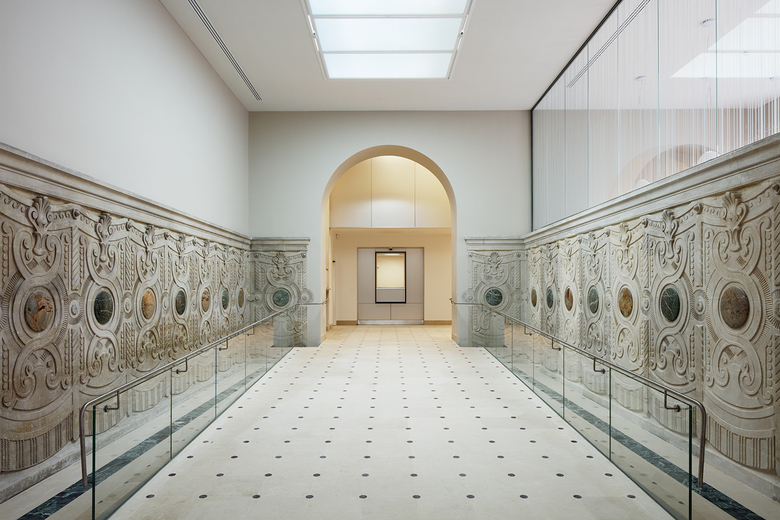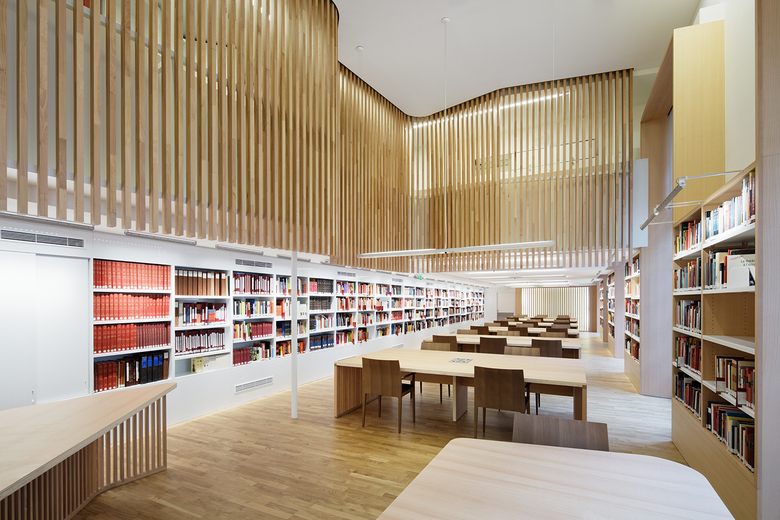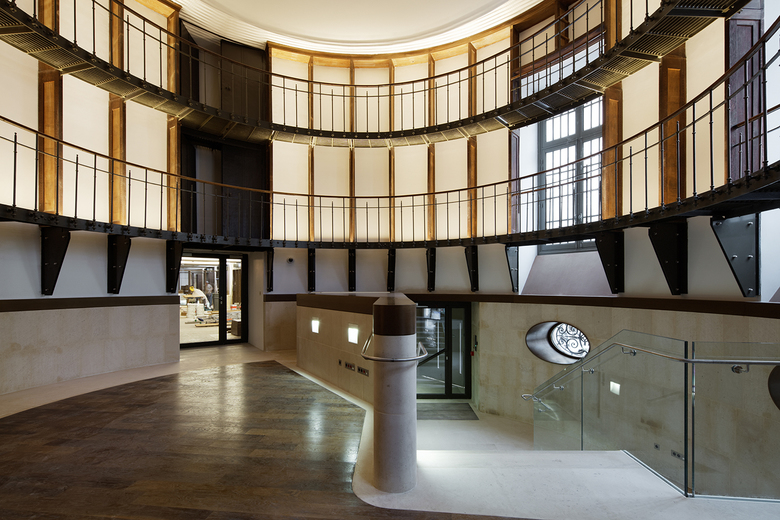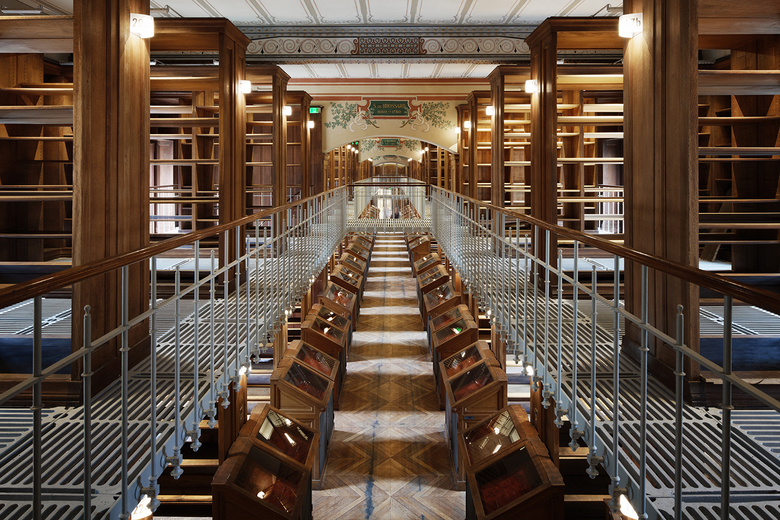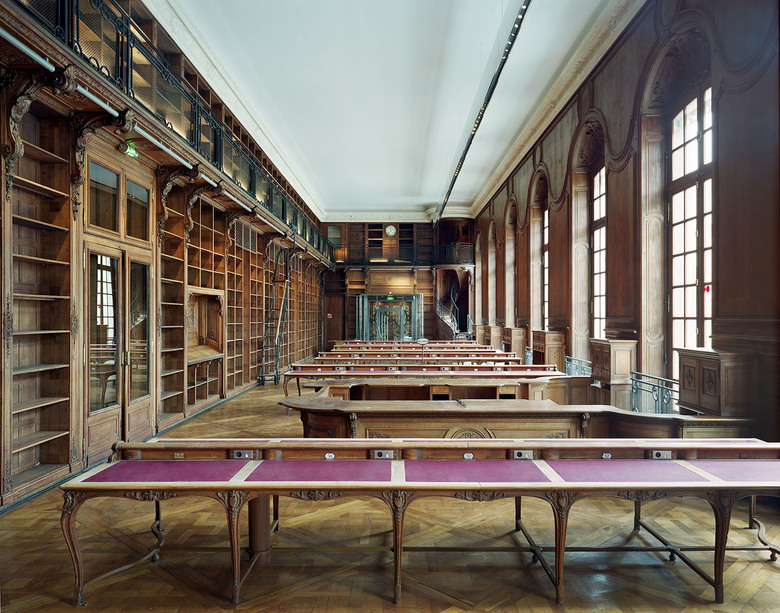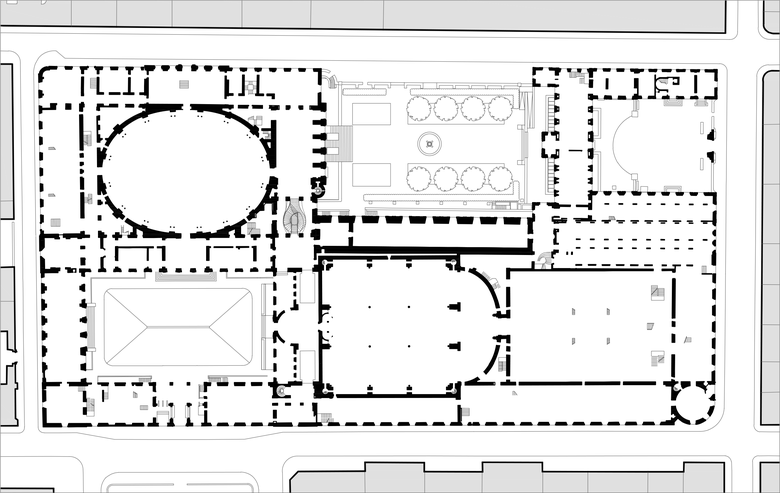Bruno Gaudin & Virginie Brégal Arcitectes
Restructuring of the Richelieu Site
The historical site of the Bibliothèque Nationale de France, rue de Richelieu, has just reopened after ten years of complete renovation by the architects Bruno Gaudin and Virginie Brégal.
The Richelieu Quadrangle houses the Manuscripts Department, the Maps and Plans Department, the Coins, Medals and Antiques Department and the Performing Arts Department. It is also home to the Bibliothèque de l'Institut National d'Histoire de l'Art (INHA, the French national art history library) and since the completion of the recent works, the Bibliothèque de l’École des Chartres.
In the early 2000s, observing this aging edifice led to the inevitable conclusion the site had become obsolete. This included its technical and security installations, the conditions under which the public was received, as well as working conditions and conditions for conservation of the collections. The building no longer fulfilled the role for which it had been designed. A major overhaul had become urgently necessary. And this could no longer be carried out “bit by bit”, as had been done since the late 1950s – period during which Michel Roux-Spitz’s extensions were completed – but rather by means of a major campaign of works on the scale of the entire complex of buildings on the site.
The outcome of the negotiated deal included the general project management being entrusted to Bruno Gaudin’s architecture office. The restoration of the Salle Labrouste, a structure listed in the ISMH (Inventaire Supplémentaire des Monuments Historiques), was entrusted to Jean François Lagneau ACMH (architect in chief of Monuments Historiques). The works, which began in 2011, were divided into two phases to enable both the setting up of the particularly delicate construction site and, in parallel, to be able to keep the library partially open on the rue Vivienne side.
Although the site's visibly distinct geometric forms are divided into ordered units (immense reading rooms, courtyards, garden, etc.) the gradual expansion of the complex since the 17th century was carried out through endless transformations, enlargements, demolitions, and densifications. Behind the unified and ordered envelope of the stone façades are hidden buildings that have been refurbished and reorganized – and sometimes even rebuilt − many times over, some of which house up to 14 levels.
This long history of the construction of the library, often conducted by the major architects of each period, has left us with a heritage of extreme complexity commensurate with the richness of the heritage of the spaces that characterize it. By hewing as closely as possible to the reality of the existing ensemble, the challenge of this project consisted of seeking the right balance between a building and a program.
PROJECT DETAILS
Location
58 rue de Richelieu - Paris 75001
Client
Ministry of Culture and Communication,
Ministry of National Education – Higher learning – research and innovation
Delegated project management:
Operator of patrimony and cultural real estate projects of (OPPIC)
Prime contractor
Architects of Record: Atelier Bruno Gaudin & Virginie Brégal
Chief Project Architect: Raphaële Le Petit with Guillaume Céleste, Céline Becker and Nicolas Reculeau
Lighting engineer/designer: L’Observatoire 1 (Georges Berne with Emmanuelle Sebie)
Technical engineering firm: EGIS bâtiments
Construction economist Monument Historique specialist: Thierry Hellec sub-contractor
Acoustical engineering firm: ACV Acoustique
Coordination with Fire Department and prevention specialists: Casso & associés
Contracting authority Monuments Historiques for Listed Spaces
Phase 1: JF Lagneau architect in chief of Monuments Historiques and Cizel consultant economist
Phase 2: Michel Trubert architect in chief of Monuments Historiques
Surface Phase 1 and Phase 2
68,000 m2 SHON (Net Internal Area) Cost: €70.8m excluding VAT
Calendar
Selection by competition: July 2007
Phase 1 construction: June 2011- May 2016
Phase 2 construction: scheduled for 2017-2020
